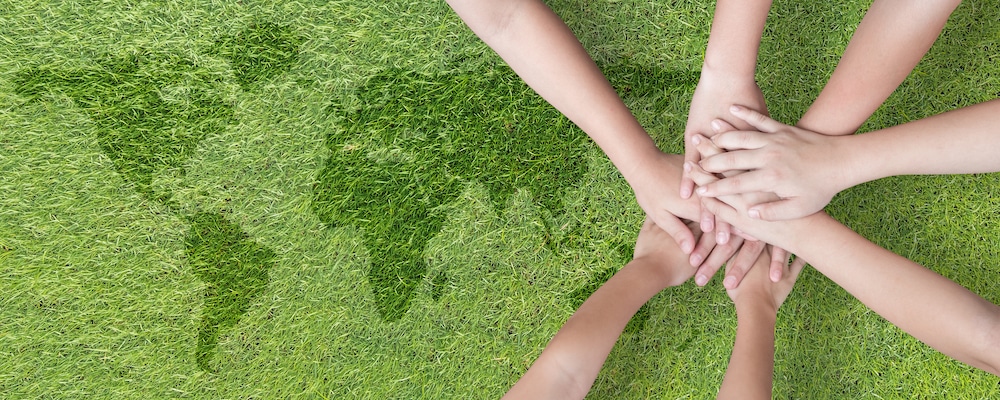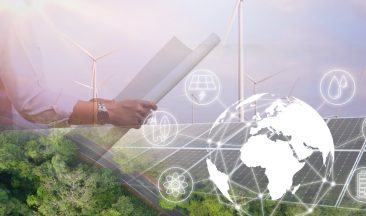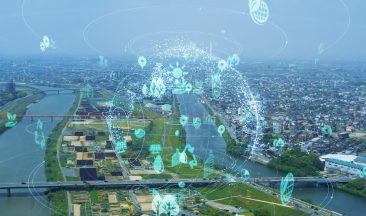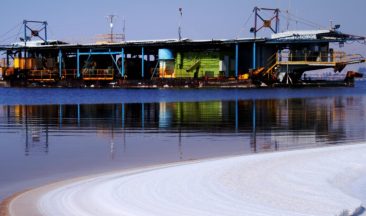There is world consensus that greenhouse gasses and climate change continue to take an increasing toll on all earth’s ecosystems and we must act now.
United in Science, a multi-organization high-level compilation of the most recent science related to climate change, impacts, and responses states clearly: we are heading in the wrong direction. So says the World Meteorological Organization.
The report, United in Science, states that “greenhouse gas concentrations continue to rise to record highs. Fossil fuel emission rates are now above pre-pandemic levels after a temporary drop due to lockdowns. The ambition of emissions reduction pledges for 2030 needs to be seven times higher to be in line with the 1.5 °C goal of the Paris Agreement.”
Many countries have recently been underwater. Wildfires, severe droughts, major storms, and extreme weather patterns are observed across multiple continents. All of these phenomena all implicated in global climate change.
Temperatures experienced in the past seven years have reached record levels and it is estimated that temperatures will temporarily be 1.5 degrees above the 1850 -1900 Average.
Carbon emissions have never been this high at any time during human history and the UN Chief Antonio Guterres has warned that we are on a “fast track” to disaster. In his press conference, prior to the 77th UN General Assembly in September 2022, he stated: “Lower the temperature — now! Don’t flood the world today; don’t drown it tomorrow.”
Decarbonization is imperative!
But What is Decarbonization?
Decarbonization is the reduction or removal from the atmosphere of the carbon dioxide (CO2) we create by changing over to low-carbon sources of energy. Carbon neutrality is the noble goal of the 2015 Paris Agreement which strives to limit global warming to below 2°C below preindustrial levels by substantially reducing carbon emissions and carbon footprints.
These goals have become a global imperative with corporations, governments, and society in general, declaring their intention to be carbon neutral by 2050.
How to Decarbonize
To do this we will need a fundamental shift in both the way we consume and generate energy. We need to make more use of green energy from sources like solar, biofuels, and hydrogen as opposed to fossil fuels. Governments and industries are setting emission goals but these need to be accelerated.
Some of the challenges are the replacement of assets with long life spans and eliminating or modifying highly energy-dependent processes or applications.
The power sector has many options for carbon reduction including solar and wind technologies, but these come at a cost and need to be scaled up significantly if the decarbonization goals are to be met.
The 2030 Decarbonization Challenge
Many industries and governments have embraced these concepts and realized how critical decarbonization is to both the environment and mankind and have introduced initiatives for carbon footprint reduction.
Although the goal is carbon neutrality by 2050, an interim goal of achieving meaningful reductions by 2030 has been adopted. This is in harmony with the “Green Deal” which encourages improved efficiencies, new technologies, circular economies, and markets for by-products and emissions.
Which Sectors Release the Most Emissions?
- Transportation sector fossil fuel usage –16.2%
- Energy sector –Lighting, home heating, appliances, and computer power– 57%
- Industrial / Production Sector – powering manufacturing processes– 5.2 %
- Waste – organic matter and waste residues generated from plants, animals, and humans– 3.2%
- Agriculture, Forestry, and Land Use – 18.4%
ICL’s Decarbonization Roadmap
As a key component of ICL’s 2022- Year of Sustainability, we have created a decarbonization roadmap with the ultimate goal of carbon-neutral greenhouse gas (GHG) emissions by the year 2050 with an interim goal of the reduction of Scope 1 and 2 GHG emissions by 30% by 2030. This is in line with the Paris agreement’s goal of limiting global warming to not more than 2 Deg C and will result in a substantially reduced company carbon footprint.
To achieve these goals, we have already instituted several initiatives. ICL Dead Sea is currently able to supply electricity to meet almost all of ICL’s power needs at its Israel sites. The power generated has a significantly lower carbon intensity than from the national grid.
There is a phased transition of procurement of energy across all ICL sites to renewables starting with Europe where most current suppliers have already reduced their emissions.
Energy efficiency has been implemented company-wide which has resulted in lower energy costs and consumption.
Company-wide fuel and refrigerant replacement, internal pricing of greenhouse gas emissions, employee training, and process redesign are just some of the other initiatives in place to achieve our corporate sustainability goals.
ICL is also a signatory to the Together for Sustainability initiative which is a global network of 33 major chemical companies. To date, 500 suppliers have committed to our efforts to improve supply chain sustainability and subsequent reduction in the company’s carbon footprint.
Another corporate climate change initiative to lower carbon emissions is ICL’s Employee Carbon Challenge.

ICL’s Employee Carbon Challenge
As one of ICL’s corporate climate change initiatives, ICL has introduced the Employee Carbon challenge. We asked Ziv Kohav, ICL’s RD&I, Manager, Portfolio Management and Governance, to tell us about this project. Here is what we learned.
Birth of the Initiative
“In our continuous quest to lower our environmental impact and the declaration of ICL’s Year of Sustainability, the ICL’s RD&I team came up with the plan to involve employees around the globe to come up with promising ideas for decarbonization,” Ziv tells us.
An open challenge was created for employees to find creative ways and solutions to lower our environmental footprint.
Ziv continues “by opening the challenge to all ICL’s employees we hoped to get fresh and novel ideas from around the world to reduce both direct and indirect emissions, capture, use and store carbon and ultimately reduce the carbon intensity of our products and processes.”
“Additionally, employees were challenged to find methods of measuring carbon levels in the soil which is an important carbon sink.” Soil absorbs up to 30% of the carbon that would otherwise end up in the atmosphere. The more carbon that we can put back into the soil, the less of it ends up in the atmosphere.
Ziv explains that “the Employee Carbon challenge was divided into 3 sections, short, mid, and long-term efforts.
Goals of the Challenge
“In the short-term, we sought ideas for the reduction of direct and indirect emissions, whilst the more ambitious mid-term goal is to capture, use and store CO2 with the ultimate goal of reducing carbon emissions from all of our processes.”
The Submissions
“We received a total of 81 submissions which were then evaluated by the respective business units. Of these 81 submissions, 4 were selected as winners. These initiatives will now enter the proof of concept (POC) phase.”
ICL’s Employee Carbon Challenge Winning Ideas
Here are four of the most promising ideas to reduce our carbon footprint.
Replacement of Cover Gases in Magnesium Casting
Molten magnesium Mg metal is a highly reactive species and does not oxidize to form a stable coating to protect itself from the atmosphere like other metals. Any reaction with the atmosphere is violent, can cause fires, and reduces both the quality and strength of the product.
To prevent this reaction, Mg is protected with a cover gas. The current gas used is a potent Green House Gas. The goal of this project was to lower GHG emissions and use a product with a lower stratospheric ozone depletion potential.
The current fluorocarbon could be replaced with one that offers the same level of protection but with a lower ozone depletion potential.
An Internal Tax on Carbon to Pay for Sustainability Projects: Use Tax to Capture Carbon or Reduce Emissions
This initiative would apply across aspects of ICL’s processes including planning, construction, manufacturing transportation, etc. This holistic approach would be all pervasive and would need to be taken into account for all new and existing projects and processes.
This will result in creating a daily awareness in all of ICL’s activities with the goal of Green House Gas reduction and to encourage the design of processes with reduced GHGs and logistics with cleaner sources of power for transportation.
The best part is that the tax could be self-sustaining in that the proceeds from the tax will be funneled back into efforts to achieve decarbonization.
Using Biochar to Reduce Direct and Indirect Carbon Emissions
The carbon cycle is based on the uptake of atmospheric CO2 by plants and algae as an energy source. When biomass or fossilized biomass (aka fossil fuels) is combusted, 99% of the carbon is returned to the atmosphere as CO2.
In its most simplistic form, this initiative involves taking the burned carbon residue and transforming it into Biochar, a soil amendment product. Biochar can reduce the amount of CO2 returned to the atmosphere by over 50%.
By using this Biochar as a soil amendment product, GHG emissions will be decreased, soil water holding capacity will be increased, and soil biology will improve with a resultant increase in plant growth, productivity, and health.
This powerful yet simple tool could have far-reaching beneficial consequences.
CO2 Recovery from Reaction Processes
This idea involves the separation of the gaseous stream from process reactors and sending it on through a purifier to produce pure CO2 which can then be liquefied.
This liquid CO2 has many uses in industry and can be sold to both external and internal customers. In addition to the reduction of CO2 emissions and reaching carbon reduction targets, this project will be profitable for the company and self-sustaining.
More on the subject:
ICL’s Commitment to a Net Zero Future
The Meaning of Corporate Social Responsibility
Sustainability – Not Just Another Catchphrase!
ICL’s Unwavering Commitment to Sustainability
As a major component of our corporate responsibility, we have committed ourselves to continuously seeking and maintaining creative responsible solutions to global sustainability challenges in the food, industrial and agricultural fields.
At ICL we continually invest in environmental protection and effects reduction, and pollution prevention, while increasing the efficiency of production facilities, preserving resources, and making the environment a priority in all RD&I as well as current and planned manufacturing.
As a global leader in specialty minerals, ICL has dedicated significant resources to environmental responsibility through preservation and rehabilitation of the environment by managing our environment’s responsibility and striving for continuous improvement in all aspects of sustainability.“ICL is proud to be a leader in sustainability practices… – a logical next step in our mission to transform from a company that extracts minerals to a company that uses its minerals to create sustainable solutions for humanity,” Raviv Zoller, President and CEO of ICL.







